“Romania offers a lot of investment opportunities for both local and international initiatives. As experts in HR and growth opportunities we prepared a few insights that will shed light on the most common indicators to keep in mind while preparing an investment plan.”
Adecco Romania
COUNTRY INSIGHTS:
- Economic development
- Infrastructure
- State aid
- Foreign Direct Investment
- Human Capital
- Employment per sector
- Education - Secondary (Highschools)
- Education - Tertiary (Universities)
- Labor costs
- Work taxes
Economic development
In 2019, Romania had a GDP (PPP) of around $547bn and a GDP per capita (PPP) of $28,189. According to the World Bank, Romania is a high-income economy.
According to Eurostat, Romania’s GDP per capita (PPS) was 70% of the EU average (100%) in 2019, an increase from 44% in 2007 (the year of Romania’s accession to the EU), making Romania one of the fastest growing economies in the EU (Wikipedia, 2021).
GDP split per economic activities Q4 2020 (Source: INS)
Infrastructure
Romania has an excellent geographical positioning with access to major European transit corridors.
Four Romanian large cities are connection points on the 4th Pan-European transport corridor: Arad, Bucharest, Craiova, Constanta. The Danube river offers fluvial connectivity with Central Europe and through the Danube-Main-Rin Romania is linked with Rotterdam and Western Europe.
Air transport is assured by 16 international airports with flights to major European and Non-European destinations.
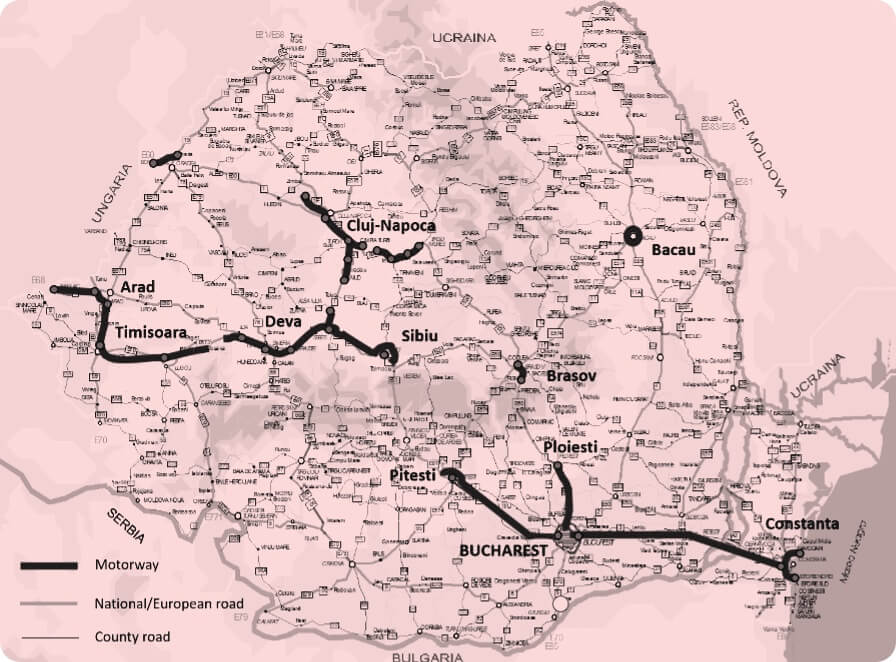
State aid
The state aid budget from 2021–2023 is estimated at €1.5bn. The intensity percentage of the aid is expressed in percentages and differs from region to region. The state support can be summed up in two large categories:
A. Investment of minimum €1m (GD 807/ 2014):
• Construction of new buildings
• Renting costs for existing buildings
• CAPEX aimed at technical installations and tools
• Acquisition of intellectual property
B. Creation of minimum 100 jobs regardless of the investment location (GD 332 / 2014):
• Salary costs registered for a 2 consecutive year periods resulted as a direct consequence of the investment
• Salary costs are comprised of gross average annual salary plus benefits
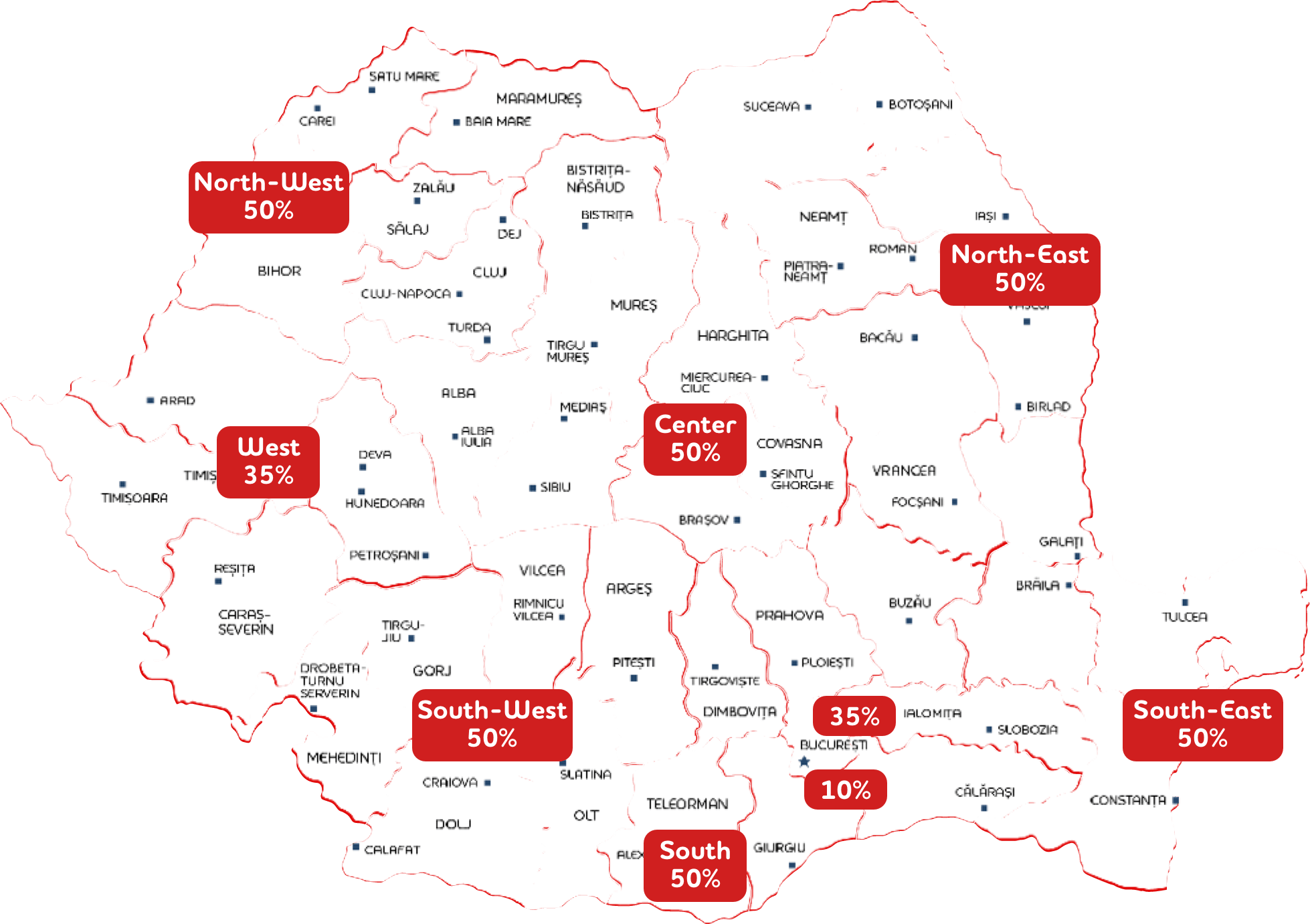
State aid intensity (Source: Ministry of Finance)
Foreign Direct Investment
Flows and stock 2003-2020

Source: NBR, Foreign Direct Investment in Romania (FDI stocks for 2009-2018 were recalculated based on the BPM6 methodological framework)
Human Capital
Romania has one of the highest discrepancies between the active population and the final number of employees.
This is because a large number of people still work and live in the countryside and sustain themselves and their families by working the land and raising livestock.
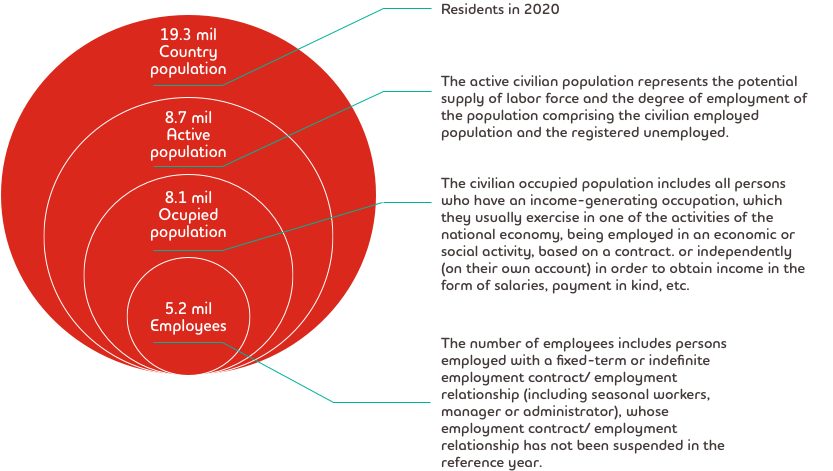
National population structure (Source: NIS)
Employment per sector
The labour force structure according to the main economic activities shows a strong fragmentation like all service-driven economies.
At 5 million employees the Romanian labour force impressively sustains pressure from demographic factors (i.e., ageing population) and the large discrepancies between the active population and the final number of employees.

Employees per economic activities (Source: NIS)
Education - Secondary (Highschools)
In Romania there are 198.295 students enrolled in secondary vocational education (2020-2021).
They take classes in 32 basic fields of study. Out of the total number of students, 16.769 study the dual education format. In this frame the school partners up with a private company to offer students practical classes, scholarships, and to update the educational curricula.
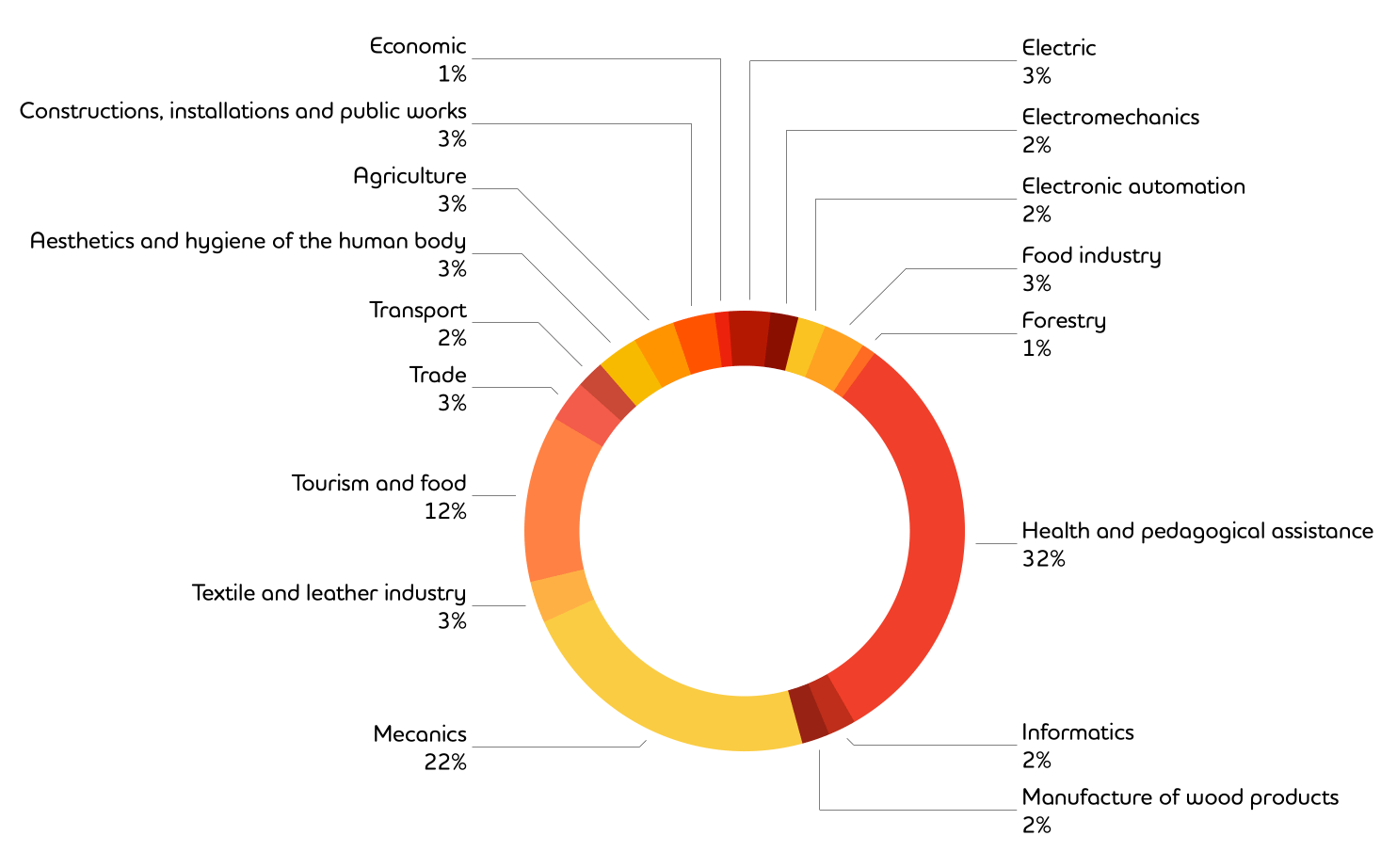
Percentage of students enrolled by basic fields of study (Source: data.gov.ro)
Education - Tertiary (Universities)
Romania has 84 higher education (state and private) institutions that offer bachelor’s, master’s, and PhD diplomas in line with the Bologna Process principles. In the academic year 2019/ 2020 there were 543.299 students enrolled in all three cycles of study.
The largest university centres are Bucharest, Cluj-Napoca, Iași, and Timișoara.
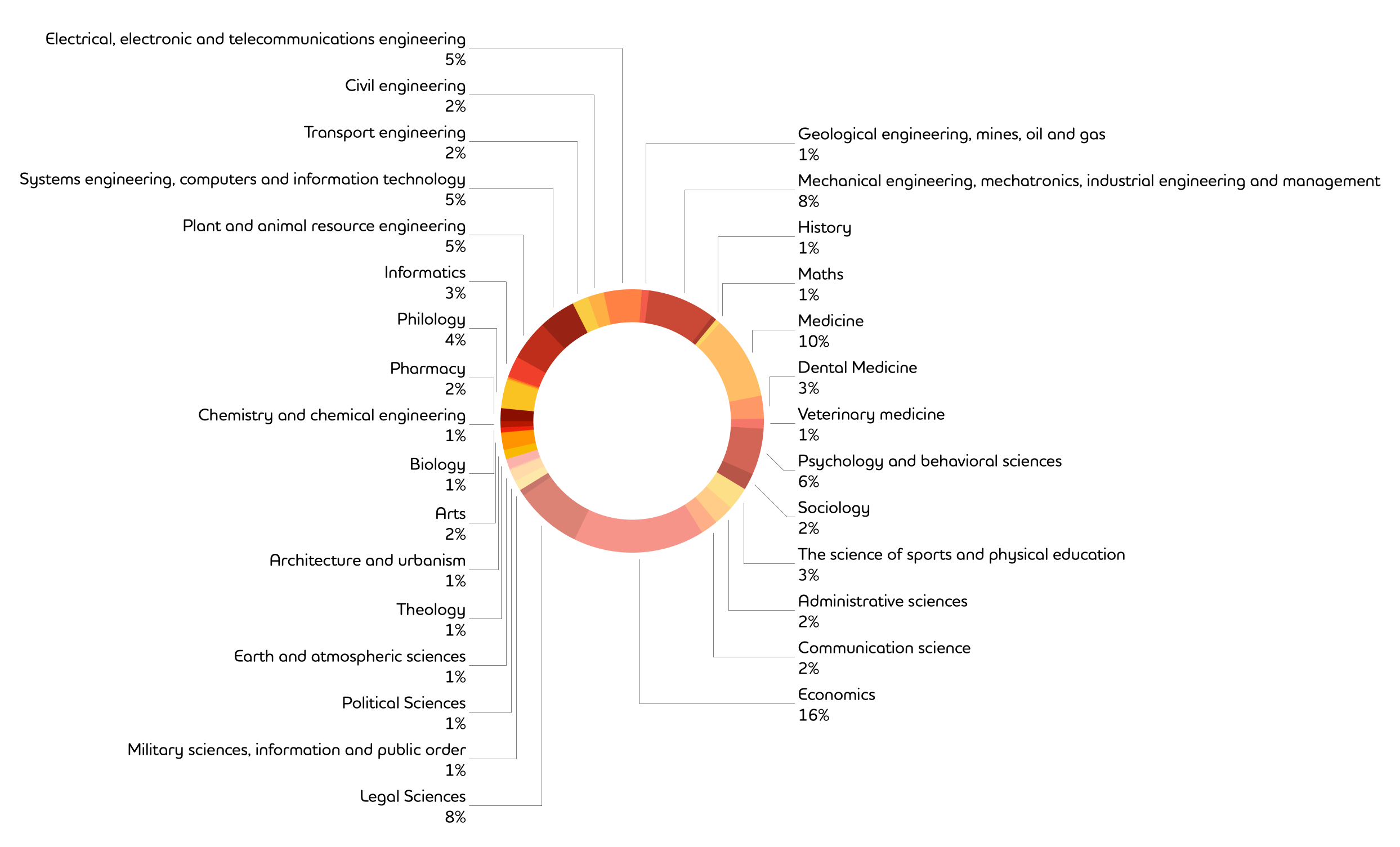
Percentage of Bachelor enrolled students by study domain (Source: data.gov.ro)
Labor costs
Romanian labour costs are among the lowest in European countries. The minimum gross salary is determined by law and as of January 2021 it was €458. This value is determined according to a normal working programme with an average of 169.33 working hours per month.
In common practice the hourly cost isn’t used in negotiations or job offers. With regards to publicly announcing the salary benefits there are no mandatory regulations. Employers can opt in publishing this detail or not.
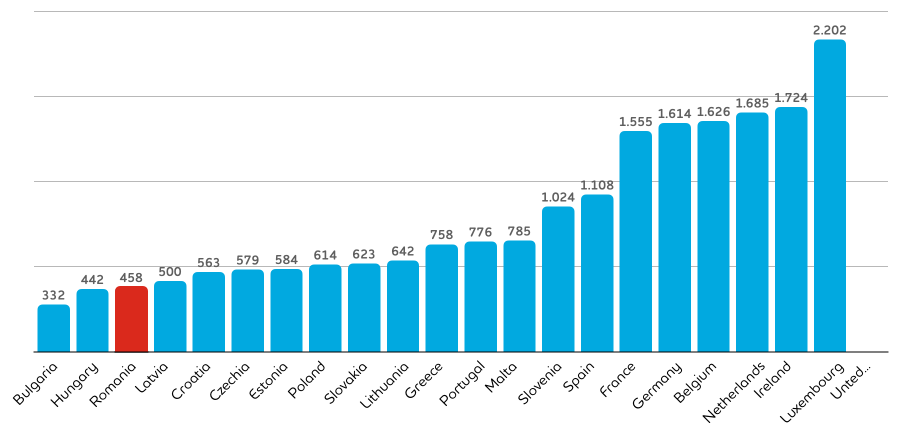
Minimum monthly Gross Wage in EU (Source: Eurostat)
Work taxes
Labour taxation impacts both employer and employee. Employees that work in IT&C sectors and research & development are exempted from the income tax.
The structure of the taxation is as follows:
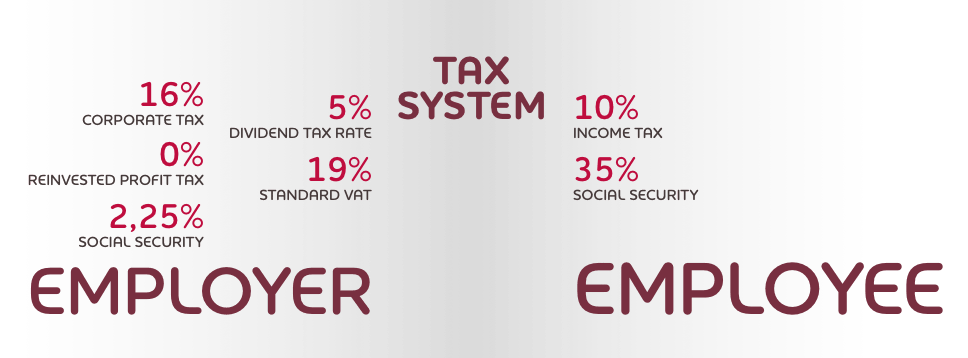
Labor taxation structure

